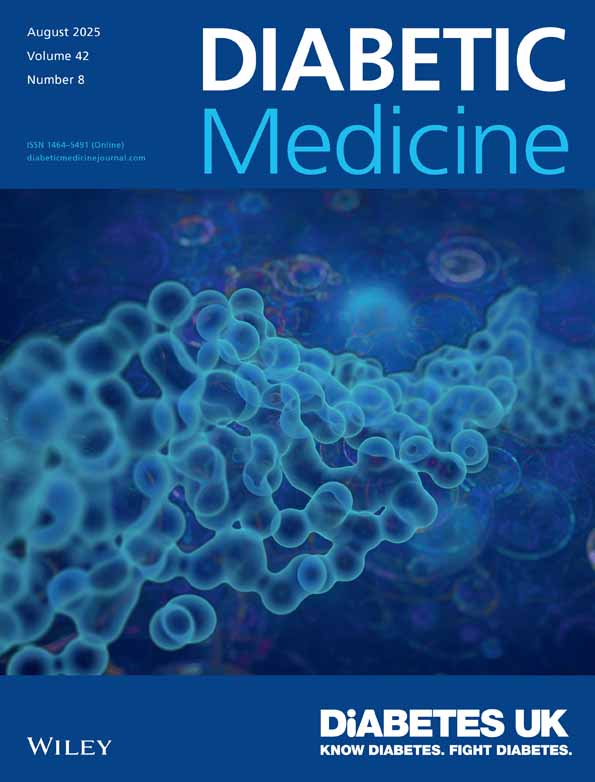Daytime liver glycogen accumulation, measured by 13C magnetic resonance spectroscopy, in young children with Type 1 diabetes mellitus
Abstract
Aim To examine daytime liver glycogen accumulation in prepubertal children with Type 1 diabetes mellitus (Type 1 DM) compared with non-diabetic controls.
Methods Liver glycogen content was ascertained in the fasting (morning) and fed (afternoon) state using 13C magnetic resonance (MR) spectroscopy. Data were analysed from six children with Type 1 DM (median (range) age 8.7 (6.3–12.2) years), who were all on conventional insulin regimens, and six healthy controls (age 8.9 (7–10.2) years).
Results Children with diabetes tended to have lower fasting glycogen values than controls but this did not reach statistical significance (median (range) 154 (70–177) vs. 178 (120–203) mM glycosyl units, Type 1 DM vs. controls respectively; P = 0.06). Glycogen increased in all children with diabetes during the day and concentrations were similar to those in controls by the afternoon (175 (157–299) vs. 172 (136–238) mM glycosyl units; P = 0.7).
Conclusions The ability of young children with Type 1 DM to replace liver glycogen depleted after an overnight fast was at least as good as that in control subjects, suggesting that impaired glycogen storage is not a contributory factor in nocturnal hypoglycaemia.
Diabet. Med. 18, 659–662 (2001)




